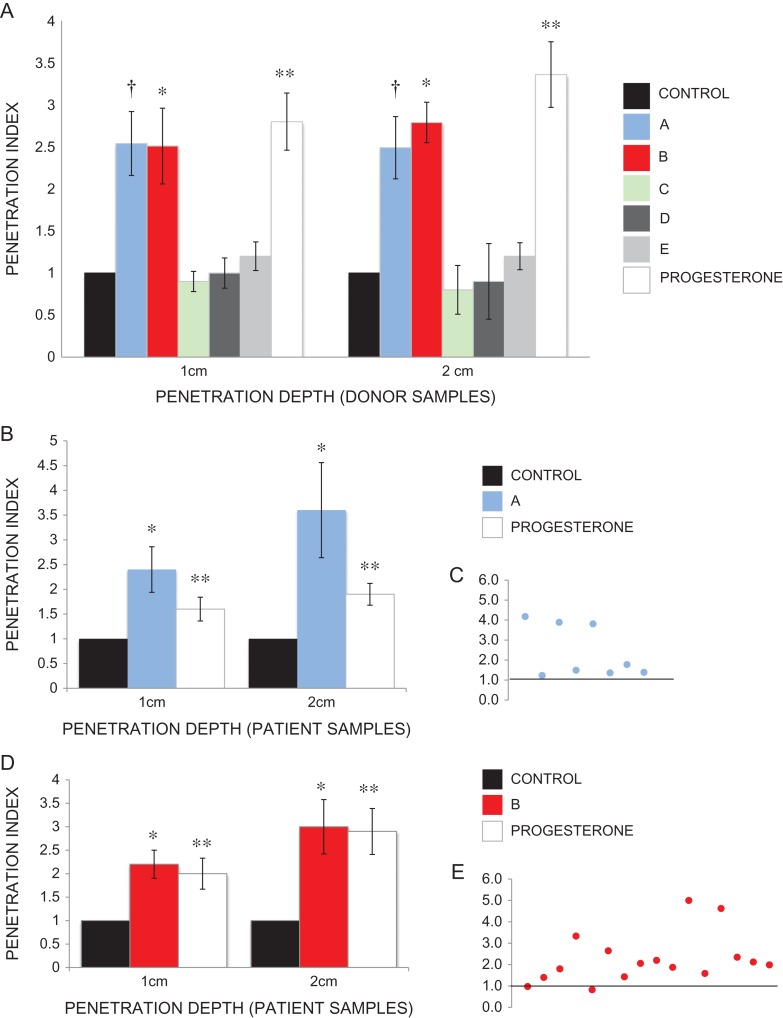Figure 4.
Sperm penetration assay. (A) Significant increase in functional motility seen in spermatozoa from healthy volunteer donors exposed to 10 μM compound A (1 cm penetration index 2.54, 2 cm penetration index 2.49; †P < 0.005) and 10 μM compound B (1 cm penetration index 2.1, 2 cm penetration index 2.6; *P < 0.005). Other hit compounds elicited no increase in functional motility. 3.6 μM progesterone was used as a positive control (1 cm penetration index 2.80, 2 cm penetration index 3.36; **P < 0.005). (B) Significant increase in functional motility seen in spermatozoa from patient samples exposed to 10 μM compound A (1 cm penetration index 2.4; *P = 0.009, 2 cm penetration index 3.6; *P = 0.02). 3.6 μM progesterone was used as a positive control (1 cm penetration index 1.6; P = 0.03, 2 cm penetration index 1.9; **P = 0.001). (C) Individual patient responses to 10 μM compound A. Control (black line) = 1. (D) Significant increase in functional motility seen in spermatozoa from patient samples exposed to 10μM compound B (1 cm penetration index 2.2; *P = 0.0004, 2 cm penetration index 3.6; *P = 0.002). 3.6 μM progesterone was used as a positive control (1 cm penetration index 2.0; **P = 0.005, 2 cm penetration index 2.9; **P = 0.0005). (E) Individual patient response to 10μM compound B. Control (black line) = 1.

